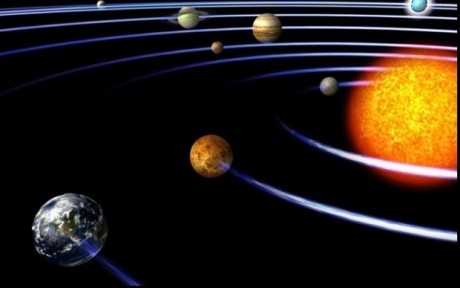Mercury, the closest planet to the Sun, appears to have a comet-like tail.
Mercury, the closest planet to the Sun, has a tail similar to that of comets that often transit the solar system. Almost like a huge comet, its tail, which stretches millions of miles from the planet, glows with a dim yellow-orange light. It’s all due to the position of the planet: Mercury is the innermost planet in our solar system. It is approximately halfway between the Sun and Earth, at an average distance of 58 million kilometers.
Because Mercury has a low mass, about 5.5% of Earth’s mass, it is not particularly strong, gravitationally speaking. Its magnetic field is not particularly strong either, being only 1% that of Earth. Therefore, the planet does not have what we could call an atmosphere. Rather, it has a thin exosphere, primarily of oxygen, sodium, hydrogen, helium, and potassium atoms, caused by the solar wind and bombardment by micrometeoroids. This exosphere is gravitationally bound to the planet, but it is too diffuse to behave like a gas. Therefore, the surface of Mercury has little protection against solar radiation and solar wind.
The difference between Mercury and comets
As comets get closer to the Sun, the ice on them begins to melt, kicking up dust embedded in the comet’s body. The pressure of solar radiation pushes this dust towards a long tail, while the gas is formed by magnetic fields embedded in the solar wind; that is why the tails of comets always extend far from the Sun, not the motion produced by the tail, but the proximity of the comet to the star.
Mercury has ice, but its tail is not made of it. The main ingredient is sodium atoms; They glow when ionized by ultraviolet radiation from the Sun, in a process similar to that produced by Earth’s northern and southern auroras. As a result, the planet looks like a comet, with a tail that has been observed to extend nearly 3.5 million kilometers from the planet, according to ScienceAlert.
Here’s Mercury and its sodium tail on June 4 through a 60mm refractor and 589.3 / 1.0nm band pass filter. The dragged star in the lower left is HIP 31650. pic.twitter.com/jlbKu5B3Oo
– Qisheng Ζhang (@aciqra) June 14, 2020
November 10, 2020:
That’s not a comet, but the tail of our inner planet Mercury “seen” from my backyard. This stacked image was exposed through a custom made sodium filter. The horizon is from the first exhibition.#mercury #spica #yellow #sodium #sodium #spica #astronomy #Science pic.twitter.com/vjpK3RAkeA– Dr. Sebastian Voltmer (@SeVoSpace) November 15, 2020





